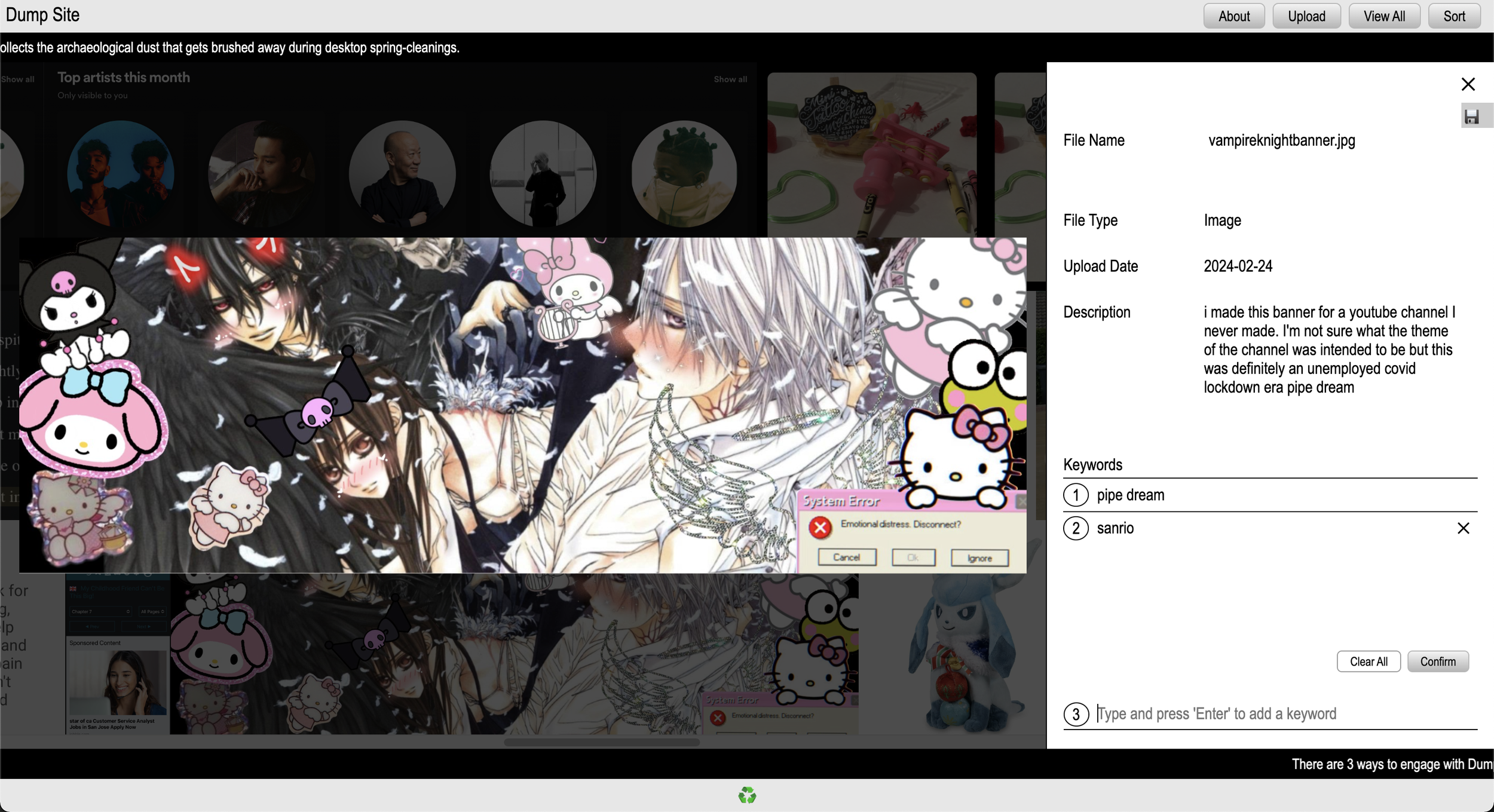Dump Site (duuump.site)
Dump Site is an archive of files pulled from the trash folder. This virtual landfill is a multimedia mass of files that were recently deleted and almost erased. What we throw away is a candid echo of what we keep close: projects, secrets, gripes, inspirations, loved ones. Dump Site is a public diary, a screenshot confessional. Conjuring memory through the lens of discard, these second-hand files evoke a sentimental gaze toward desktop debris.
This digital trash heap metabolizes deleted files into archaeological artifacts. Dump Site has three goals: make mess and sow fiction in archival practice, bridge dichotomies within materiality, privacy, usefulness, and time, and provide a field of cyber residues for gleaning cultural memory.

Goals
Bridge dichotomies within materiality, privacy, usefulness, and time,
Material vs Immaterial: The act of reconvening with trash files creates materiality out of deletion. Through pooling and archiving deleted trash, we create a tangible substrate for cultural memory.
Private vs Public: Collective upload of personal discards allows us to reminisce across desktops. This candor is only possible when collecting files that would otherwise be erased.
Past vs Present: Discard creates a schism between past and present, which is further widened by the ephemeral nature of new media. Reconvening with trash bridges this gap.
Useful vs Useless: When we use digital trash to interrogate the parameters of uselessness, they become useful in understanding the nature of virtual life and digital record-keeping.
Make mess and sow fiction in archival practice
The role of the archivist has transformed from “a selfless devotee of Truth” (Jenkinson) to “community facilitator” (Cook). This paradigm shift hinges on a critical change in focus from collecting evidence for the sake of proof to shaping memory for the sake of meaning and identity. Although “digital trash heap” implies disorder, Dump Site is also a repository built with an intentional structure. Informed by the nature of its contents, this archive is designed to protect the inherent messiness of trash. This intent is expressed through the maximalist “conveyor belt” design of the homepage, community tagging features for each trash item, and the anonymous nature of trash upload. These features protect the candor of mess and embody a truth that only exists in disorder. Collecting trash frees us from rigor, and restores what is lost in the confines of rigorous archival practices. Trash creates a mess that encourages serendipity and browsing in archives. Through mess, we allow ourselves to engage with archival material on a subjectively and emotionally The useless nature of trash gives us permission to sow fictions into archival material. This is a generative act, not corruptive one.
Through the community tagging feature, we can infer histories, add/imagine new contexts and imbue new layers of meaning to digital objects.
Provide a field of cyber residues for gleaning cultural memory.
Digital trash is able to capture life with a fidelity that physical trash cannot achieve. Mediated through our devices, our fleeting interests, jokes, and interactions are captured with ease through screenshot and download. Digital trash provides a high resolution picture of our digital self and relationships. If all discards illustrate parts of our life, digital discards create a picture with seemingly infinite resolution.
We are able to capture our digital life with such high frequency because of the perceived immateriality and fleeting nature of new media. When we pull items back out from our trash folder to share with others, we reinstate their thingness.


